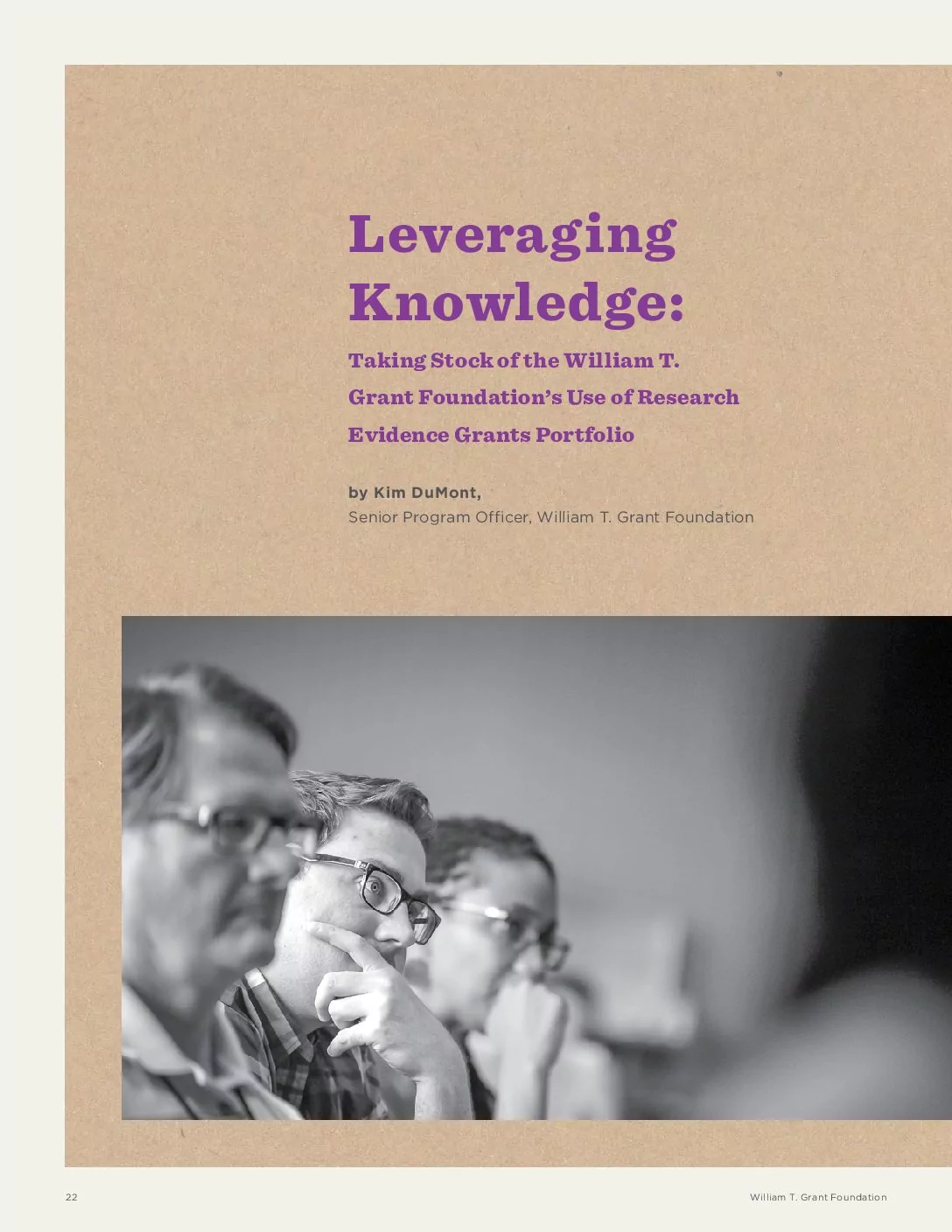Excerpt from the Introduction
The William T. Grant Foundation supports high quality research to inform programs, policies, and practices for children. In the course of this work, like other public and private foundations, we have funded studies that serve many functions. Research identifies the nature and extent of a problem, explains why it occurs, predicts what might happen in the future, offers strategies for improvement and change, and describes whether and how programs, policies, and practices work. And although the potential value of the research evidence is intuitive, the research itself is often absent from conversations and decisions about programs and practices for young people (National Research Council, 2012).
But research evidence is only one piece of the story. Policymakers and practitioners working on behalf of young people also have valuable knowledge. They have ideas about the nature and extent of problems, why these problems occur, what they mean for children and youth, and ways to make things better. Policymakers and practitioners also have concerns they want addressed and questions they want answered. Their ideas, however, rarely shape research agendas.
We’ve long suspected that greater input from policymakers would produce more useful research, which, in turn, would yield more effective responses to the challenges facing children and youth. In 2009, we launched an initiative to study research use in the worlds of policy and practice. Staff assumed that knowing more about the potential users of research would improve the production and use of research, which we defined as empirical evidence derived from systematic methods and analyses. Findings are now accumulating. This essay takes stock of what we are learning about the acquisition, interpretation, and use of research evidence, and briefly describes our call for proposals, cross-cutting themes, and key unanswered questions.
This essay originally appeared in the Foundation’s 2014 Annual Report.




